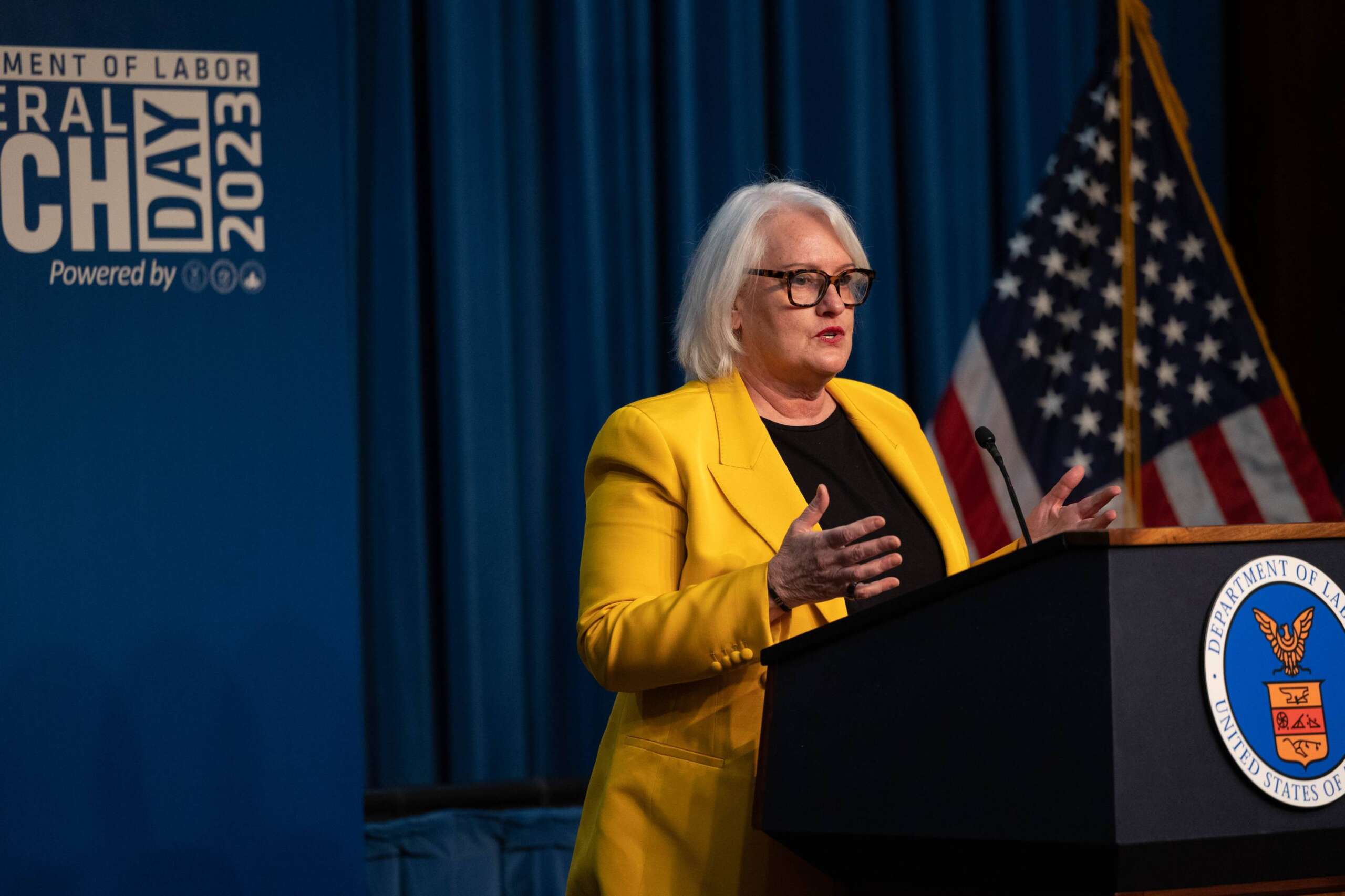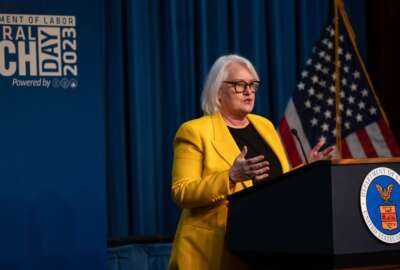Why OMB’s human-centered policy design effort is paying off
Federal CIO Clare Martorana’s tenure is coming to an end in January and she reflects back on her office’s efforts to improve federal technology.
Over the last four years, the Office of Management and Budget issued 20 memos focused on federal technology.
The goal, of course, isn’t just to issue memos and claim victory. OMB’s memos, usually, are the first step of a long process to change the way agencies deliver services, protect data and train the workforce.
Clare Martorana, whose tenure as the federal chief information officer is coming to an end in January, said the impact of her office’s efforts over the last four years is measured by how the foundation to deliver secure and seamless services continues to improve.

“We are not a gigantic organization. We are an organization that has subject matter experts, that have policy writing knowledge and experience, and then also we married that with implementation excellence. We didn’t want to build out the rest of the team that we were writing policy and throwing it over the wall, so for agencies to interpret and execute on. I found it challenging sitting in a CIO seat to get some of the OMB guidance that I could read and I understood the words, but I didn’t totally comprehend the impact we were trying to drive in some of the policy work that my team, when I was sitting in a CIO chair, had to respond to and then do the ongoing work year in and year out, for that guidance,” Martorana said in an exclusive interview with Federal News Network. “It was really important to me that we brought people onto the team that had shipped product at agencies, that had dealt with authority-to-operates (ATOs), that had to deal with acquisition and contracting, that we’re managing digital service teams, that were doing all of the diverse work that is included in an IT organization in the federal government, and it’s quite a complex operating environment.”
Martorana’s office issued the first Office of the Federal CIO impact report last week detailing not only those 20 memos, but their accomplishments over the last four years as well as future opportunities across cybersecurity, technology modernization, improving digital service delivery and artificial intelligence.
“It’s really important to memorialize what you have accomplished. These roles are challenging. The mandate for this office is extraordinary. There are 430-plus federal agencies that you are responsible for the IT, cybersecurity and digital service delivery to all of those constituents,” she said. “We have to make sure the workforces understand what our strategy and goals are as well as the public that we are serving across all of those agencies. That is extraordinary. So memorializing this making sure that we’re looking at what came before us, what we had to carry the work on because laws get passed and then it often takes time to write the guidance so that the agencies know how to interpret the law in order to actually execute the intention of the law. That has been a really important part of this baton race.”
Collaborating with budget side
As part of that relay race, Martorana made sure her team also included the budget side of OMB. As she knew well as the CIO of the Office of Personnel Management, policies that don’t come with funding become more difficult to implement successfully.
“Oftentimes, budgets are allocated directly to an agency program. They don’t go to the CIO at an agency, so the CIO is running the plumbing, but the program is actually running the customer service and customer delivery. We really keep trying to bring those things together because it’s absolutely mission critical if you’re going to run an IT shop in the 21st century that you are focused on agile delivery,” she said. “We work together with our budget colleagues really closely with cybersecurity. In particular, we did a tactic where we gathered information from agencies in the budget process to make sure that those cyber dollars were flowing to the agencies to be able to meet the really important and urgent needs that we often had to sometimes rip and replace software, upgrade things, patch things, improve our teams.”
Martorana often sat down with Nani Coloretti, the deputy director for budget, Jason Miller, the deputy director for management and the budget examiners to address the need to fund technology improvements as required through these 20 policies.
She said this “collaborative partnership” helped them look at the policies, the data, the procurement needs and other factors to decide what is needed to implement these initiatives.
“I think the partnership between OMB budget teams and the Office of the Federal Chief Information Officer is mission critical for this next chapter of not only it modernization, but then transformation,” Martorana added.
Along with budget coordination, Martorana said her office to a human-centered design approach to policy development.
“The CIOs were not surprised by anything that came out and when we had the opportunity we put things out for public comment because we wanted to hear from security researchers and academics and good government groups to make sure that the policies that we were writing met the need of the agencies, and also help our budget colleagues understand what we’re trying to accomplish, so that we bring those communities together to try and solve the problem,” she said. “I think that we have done a couple things in the Biden-Harris administration that I hope the Trump administration follows through with. So universally, I would say writing better policy helps technology work. If you do not write great policy, oftentimes, you limit teams’ abilities to drive impact in their own ecosystem, and that just becomes more bureaucracy that you need to figure out how to bust.”
Copyright © 2025 Federal News Network. All rights reserved. This website is not intended for users located within the European Economic Area.
Jason Miller is executive editor of Federal News Network and directs news coverage on the people, policy and programs of the federal government.
Follow @jmillerWFED







